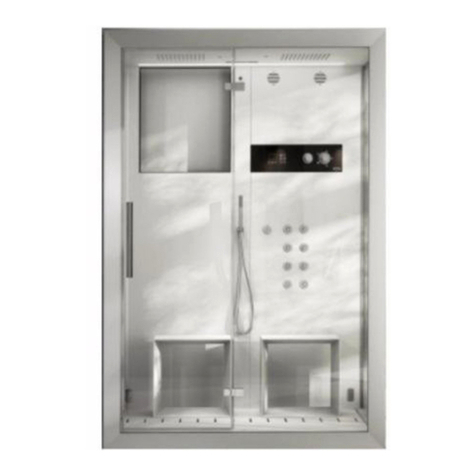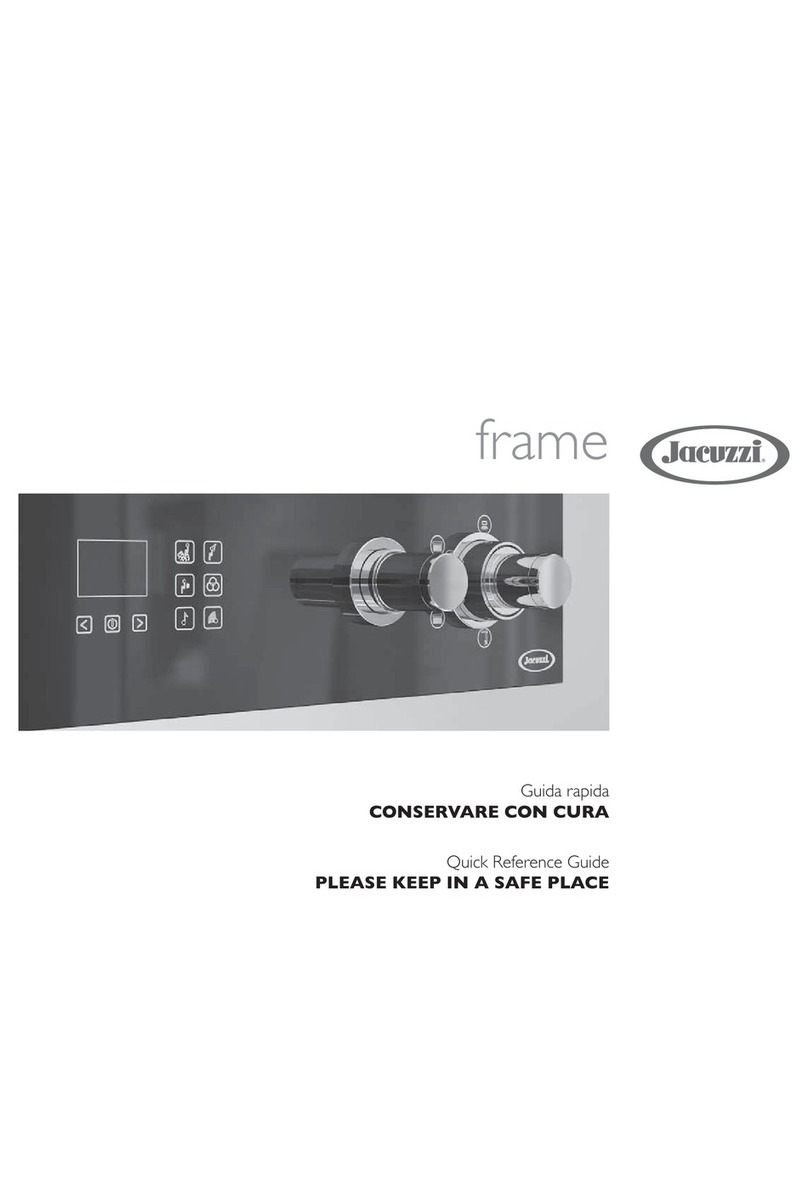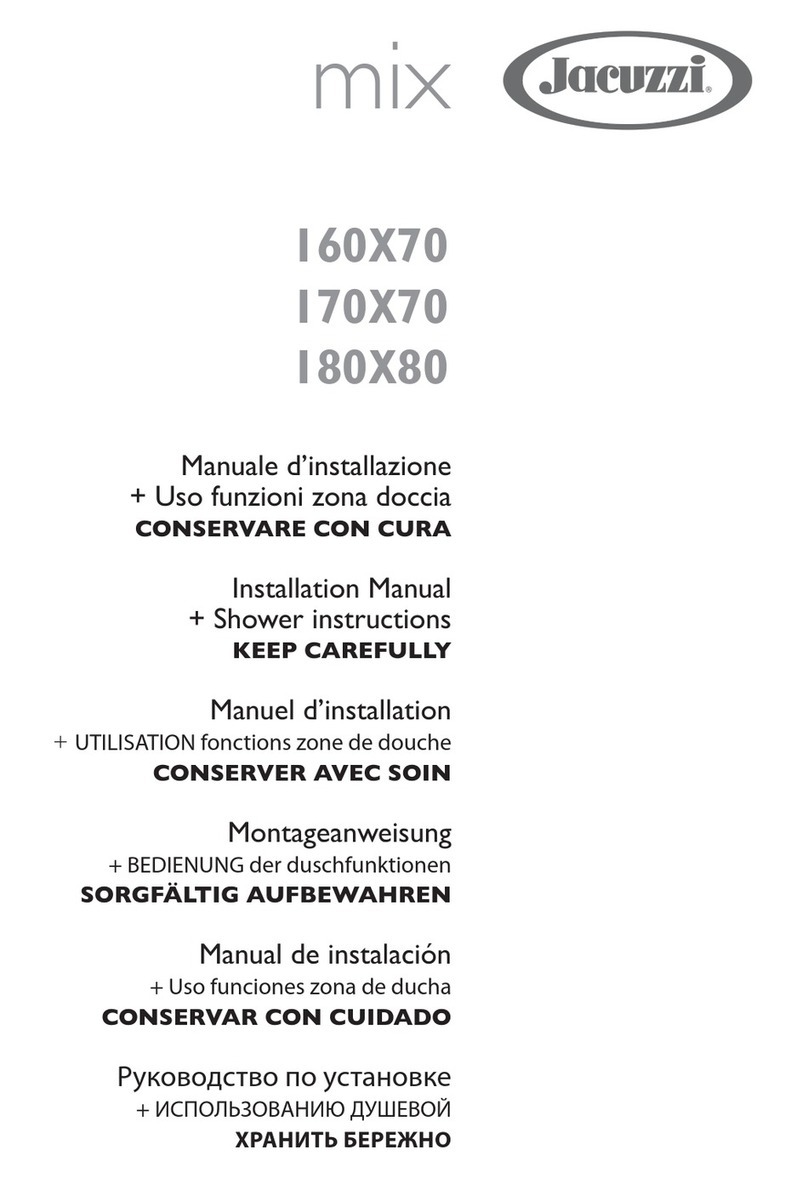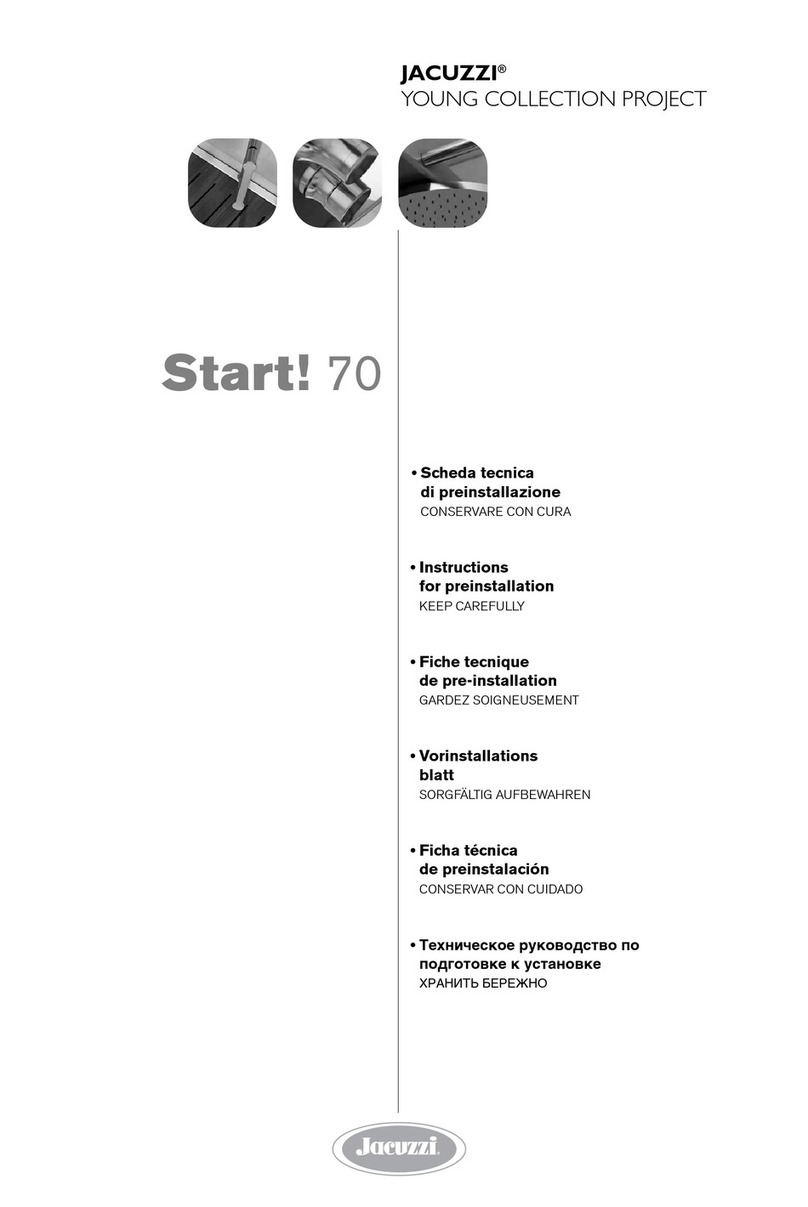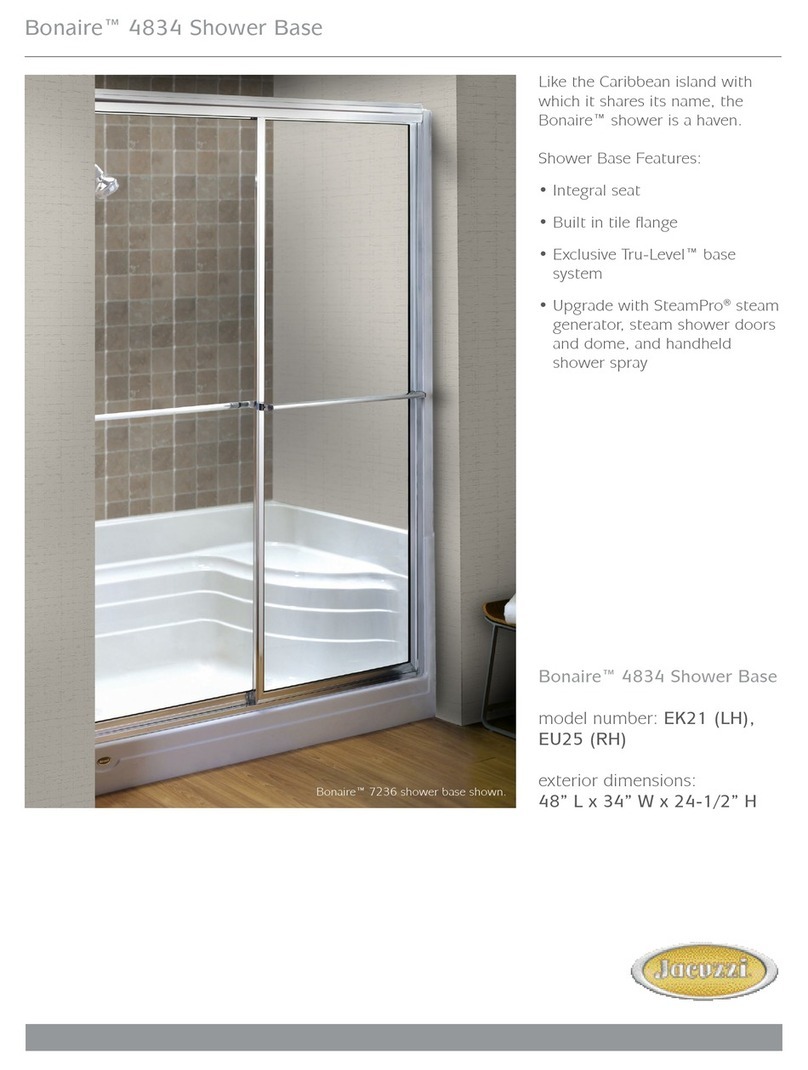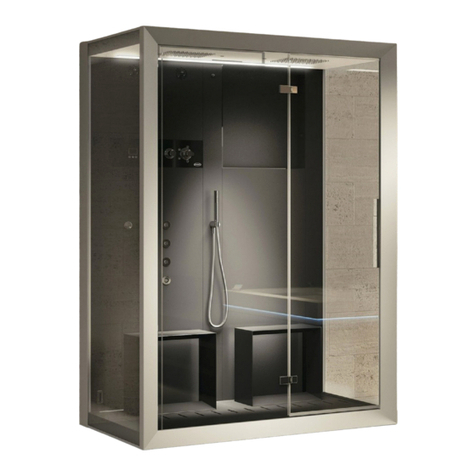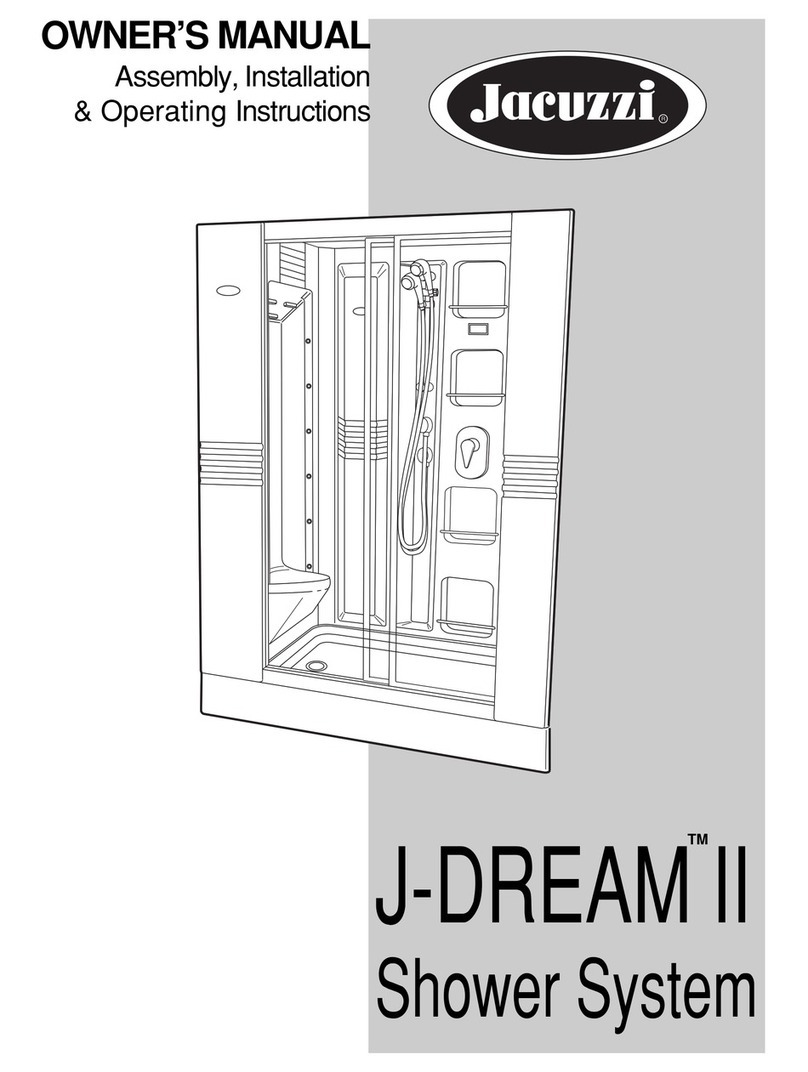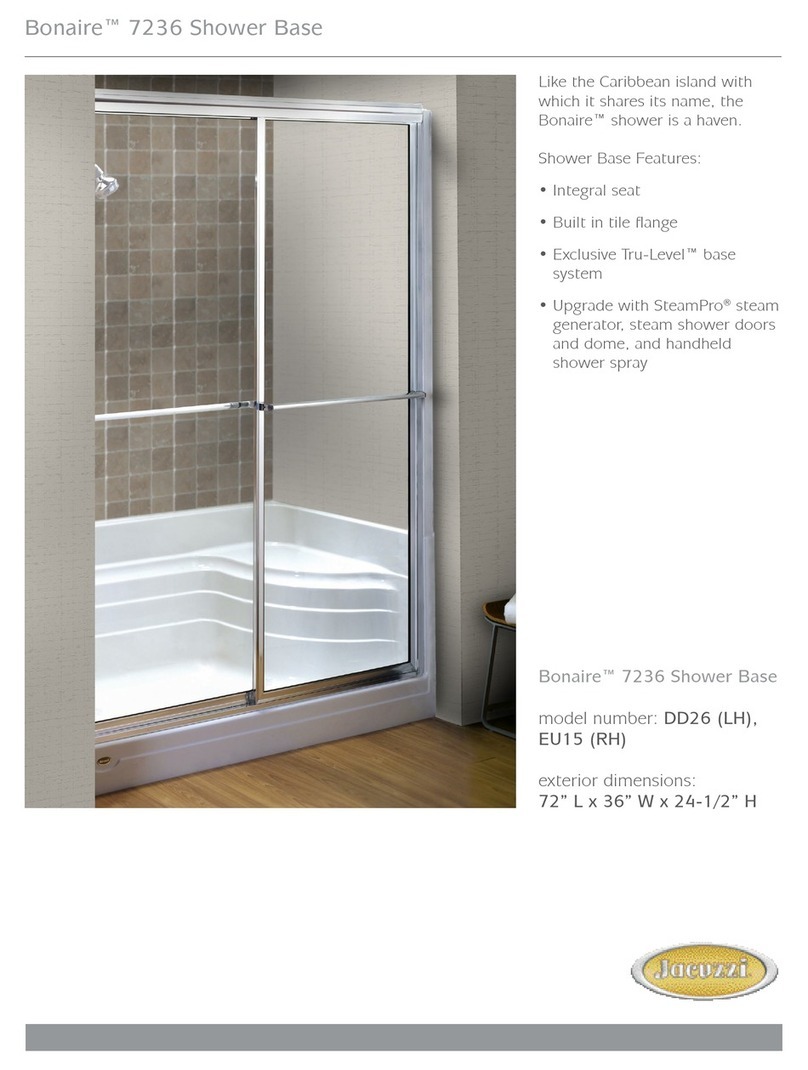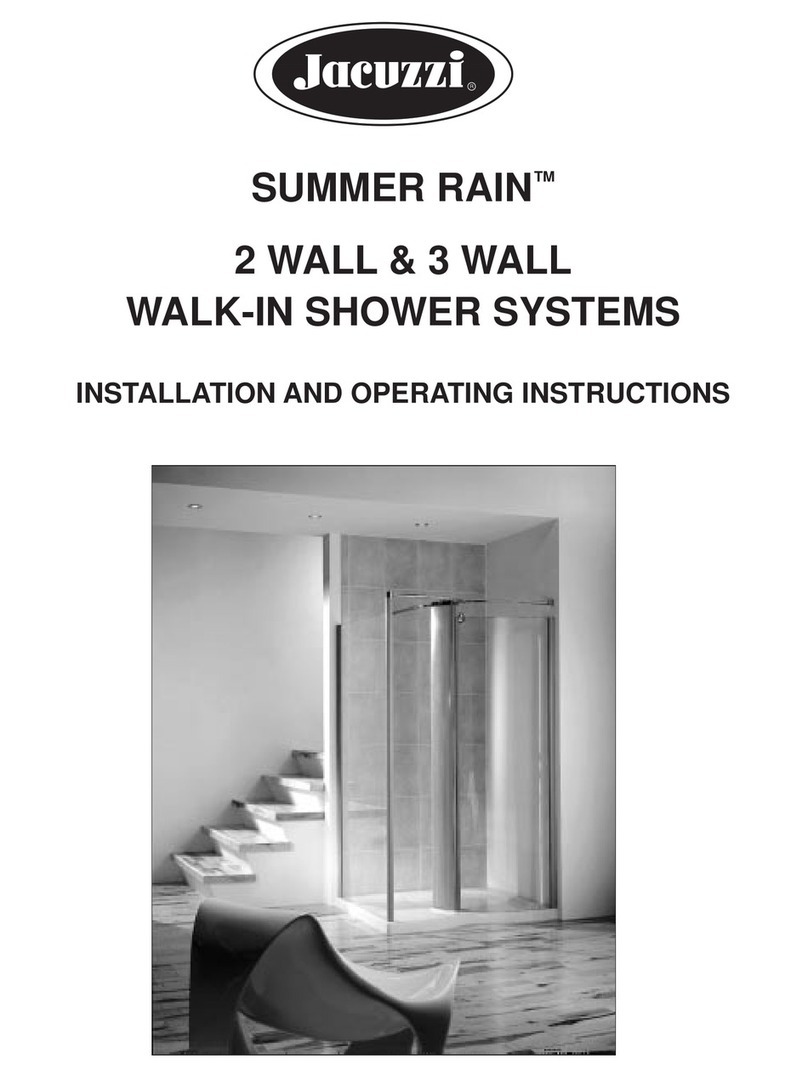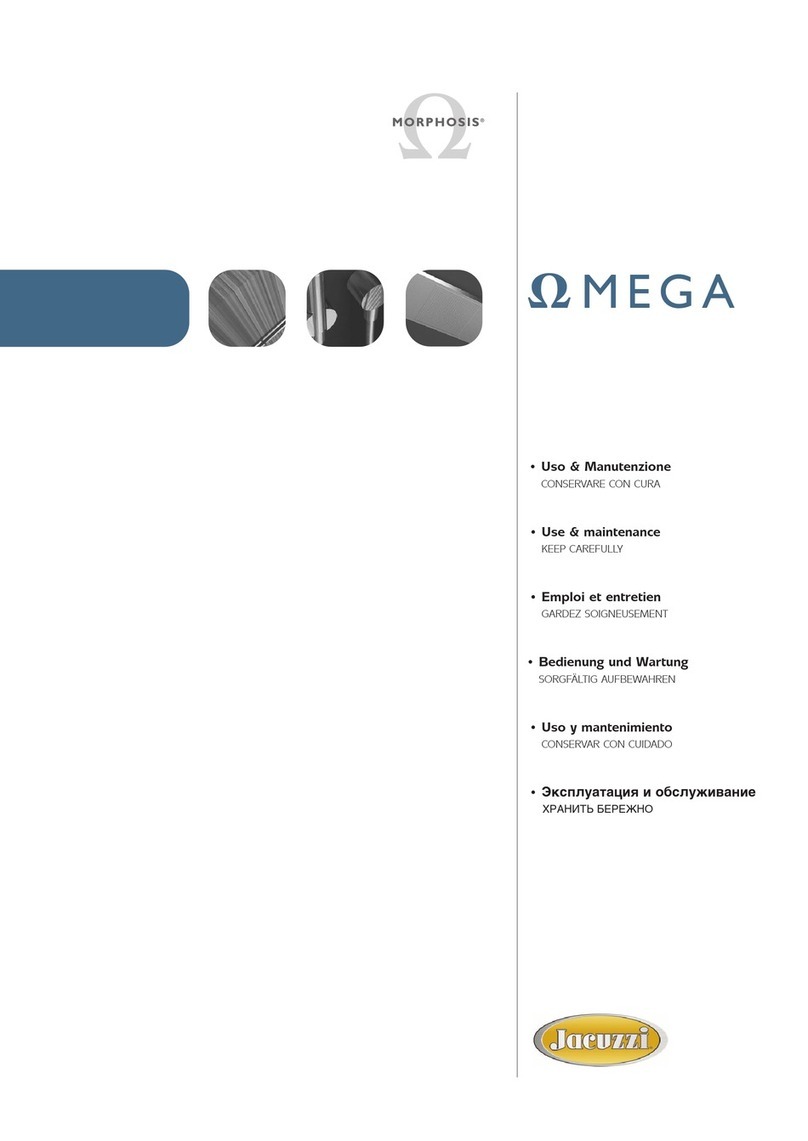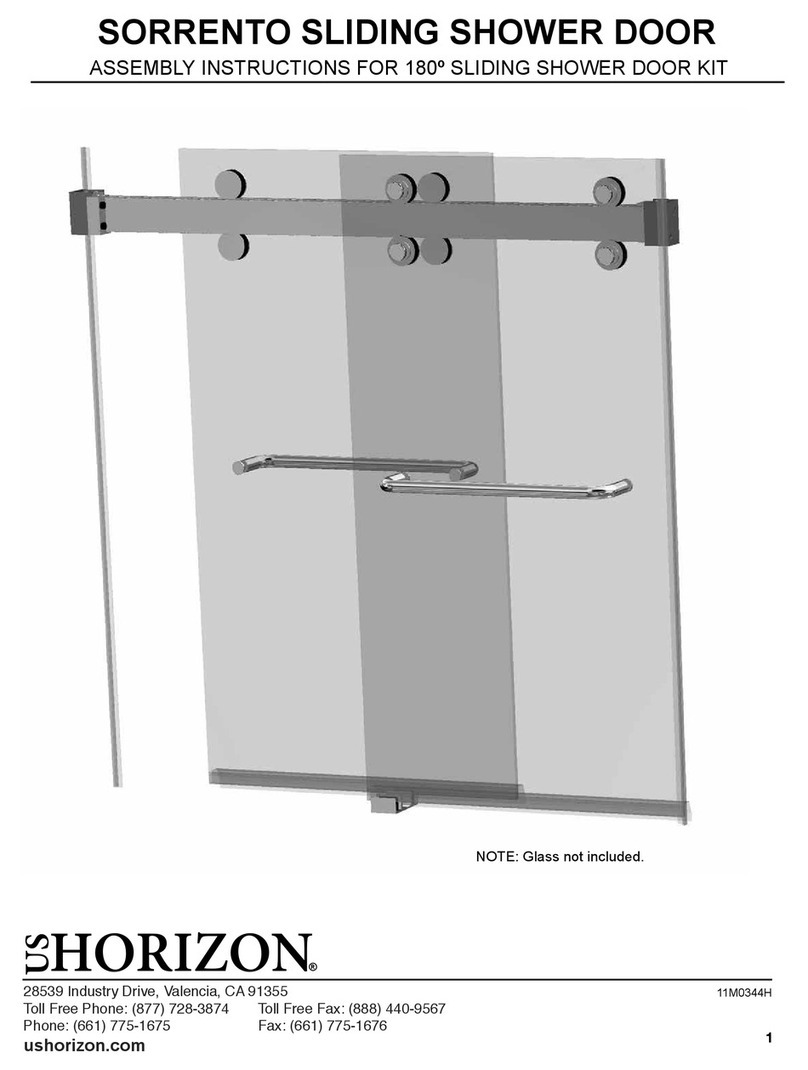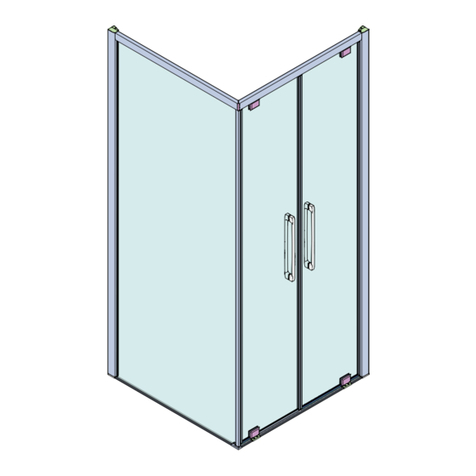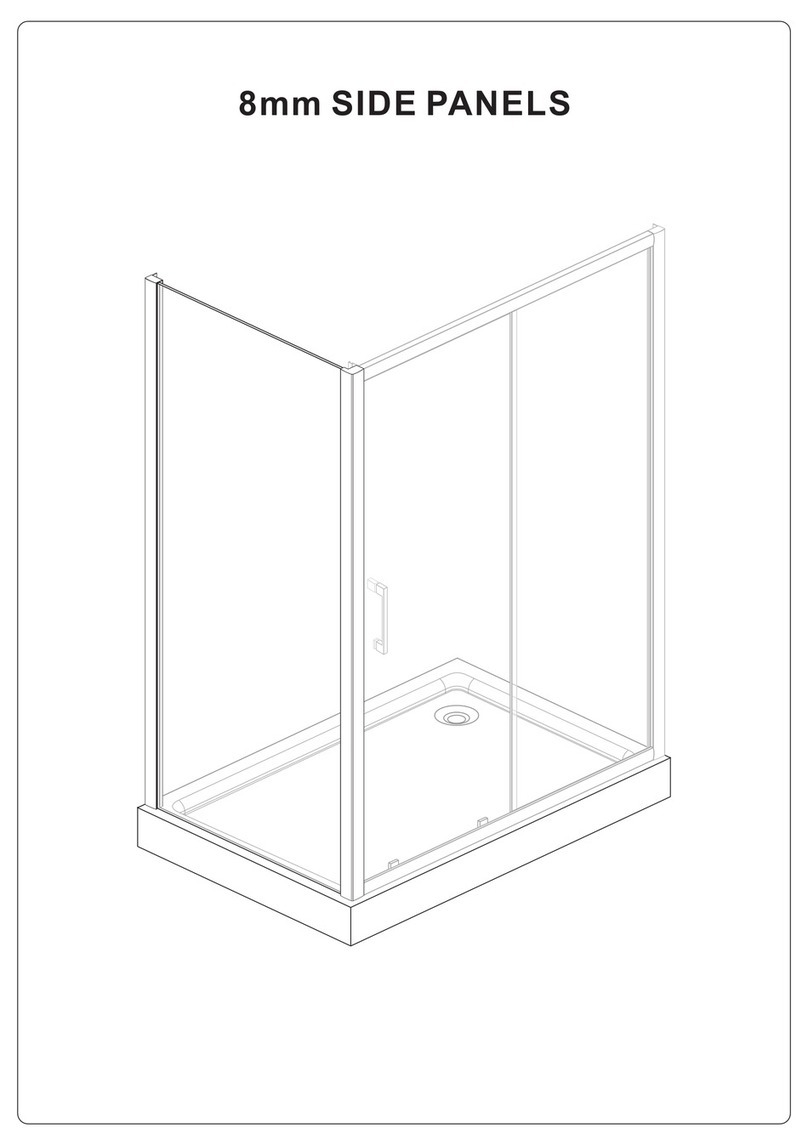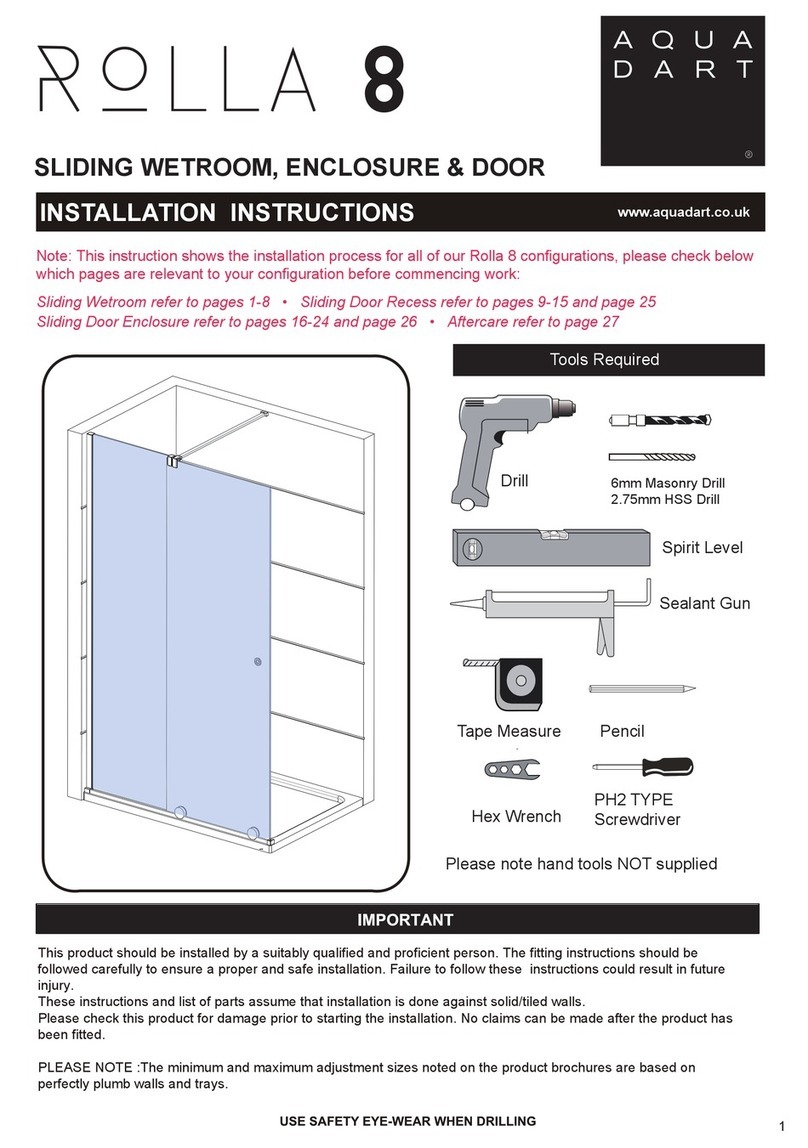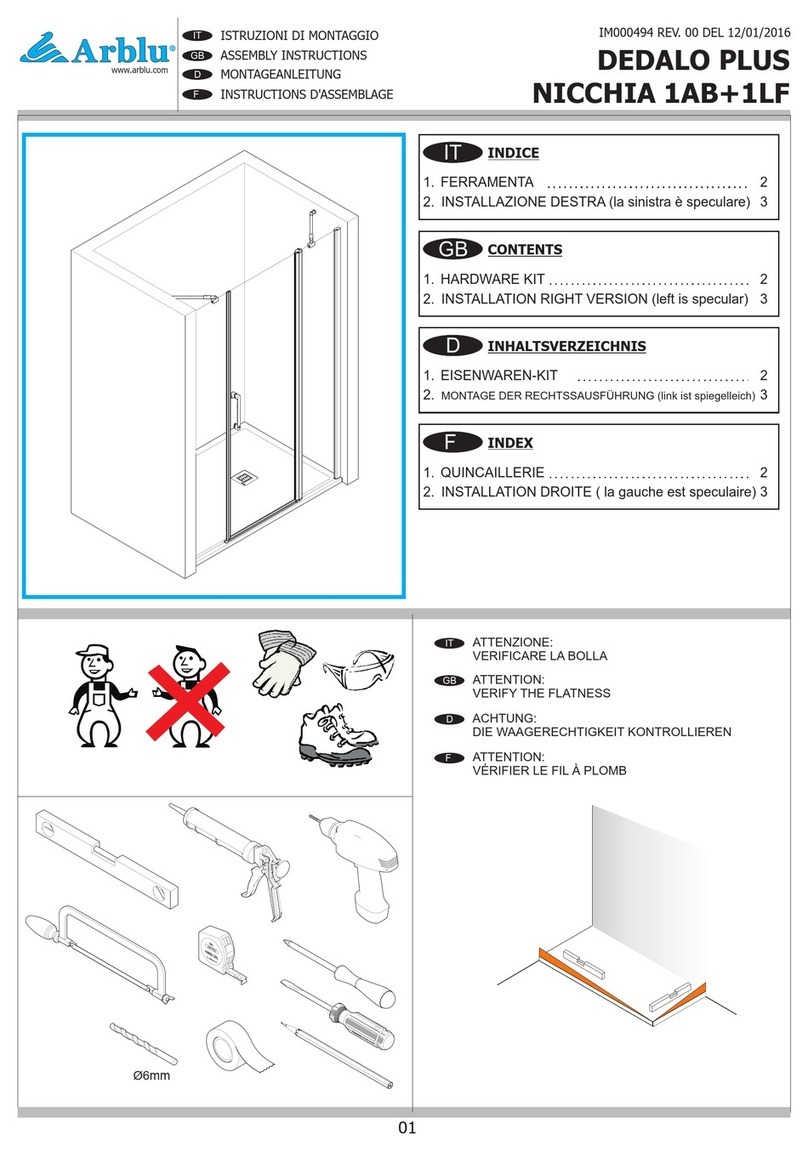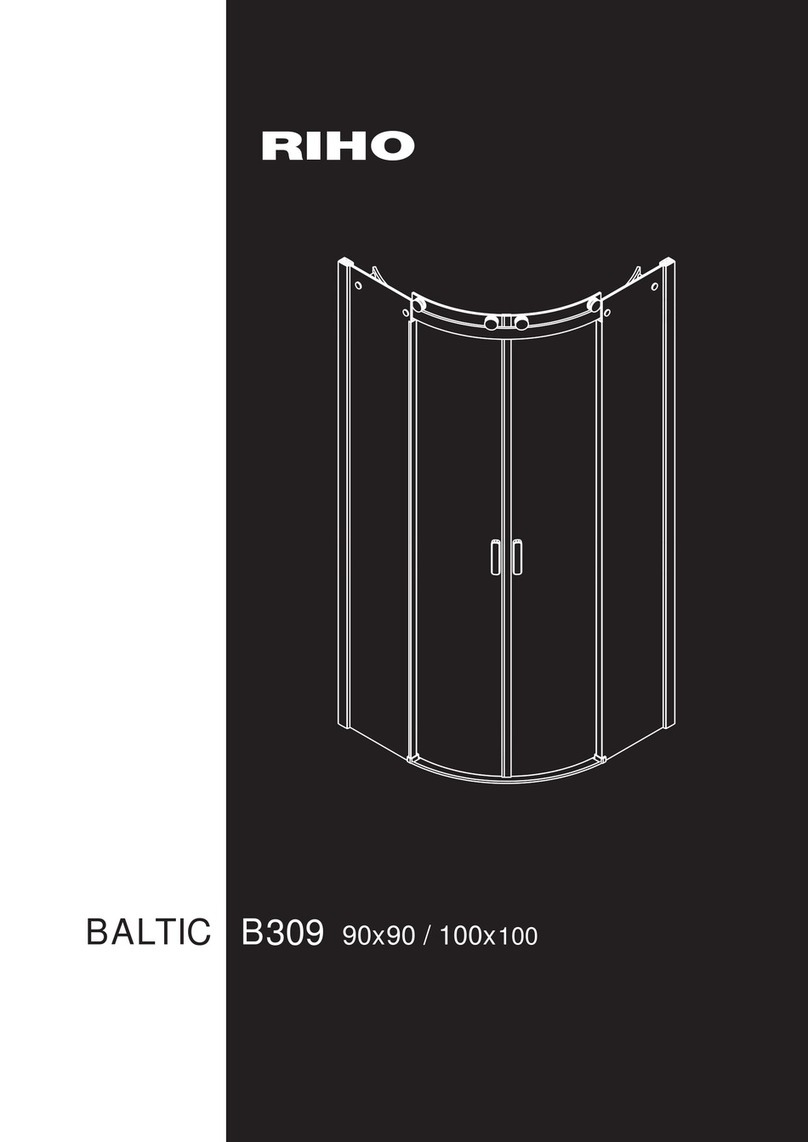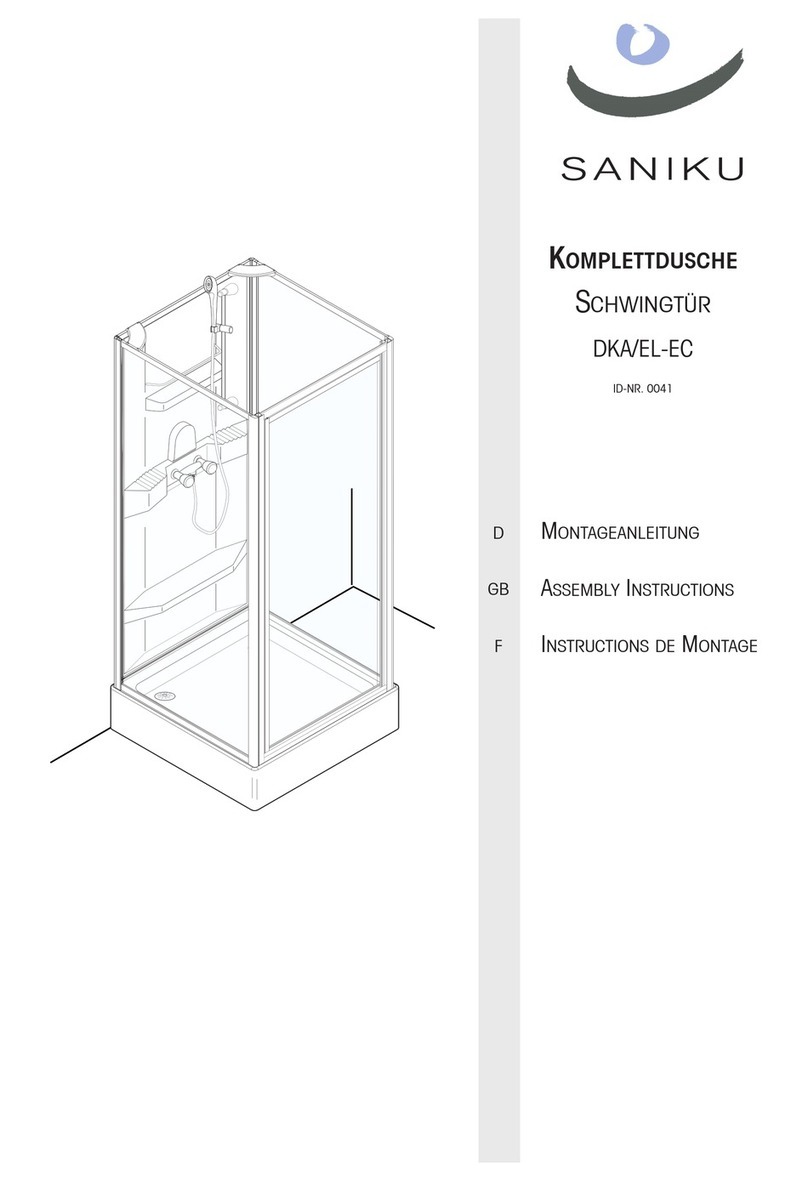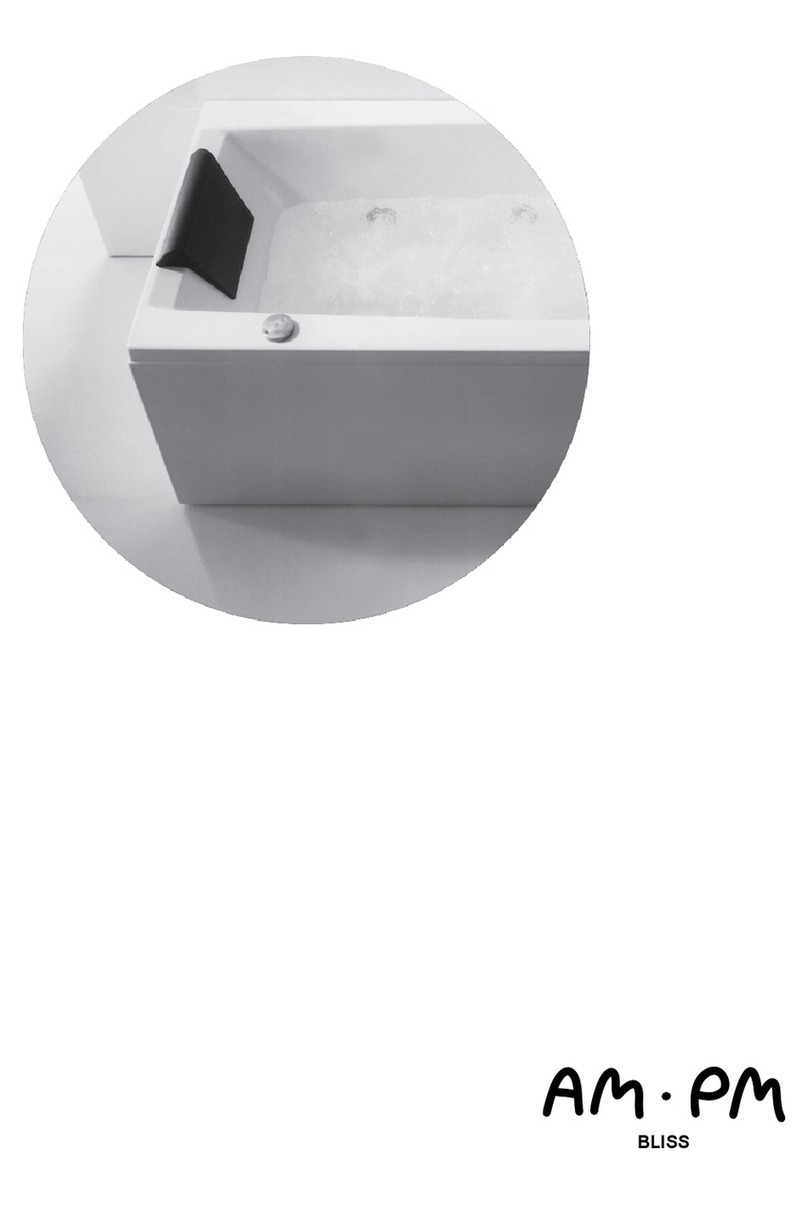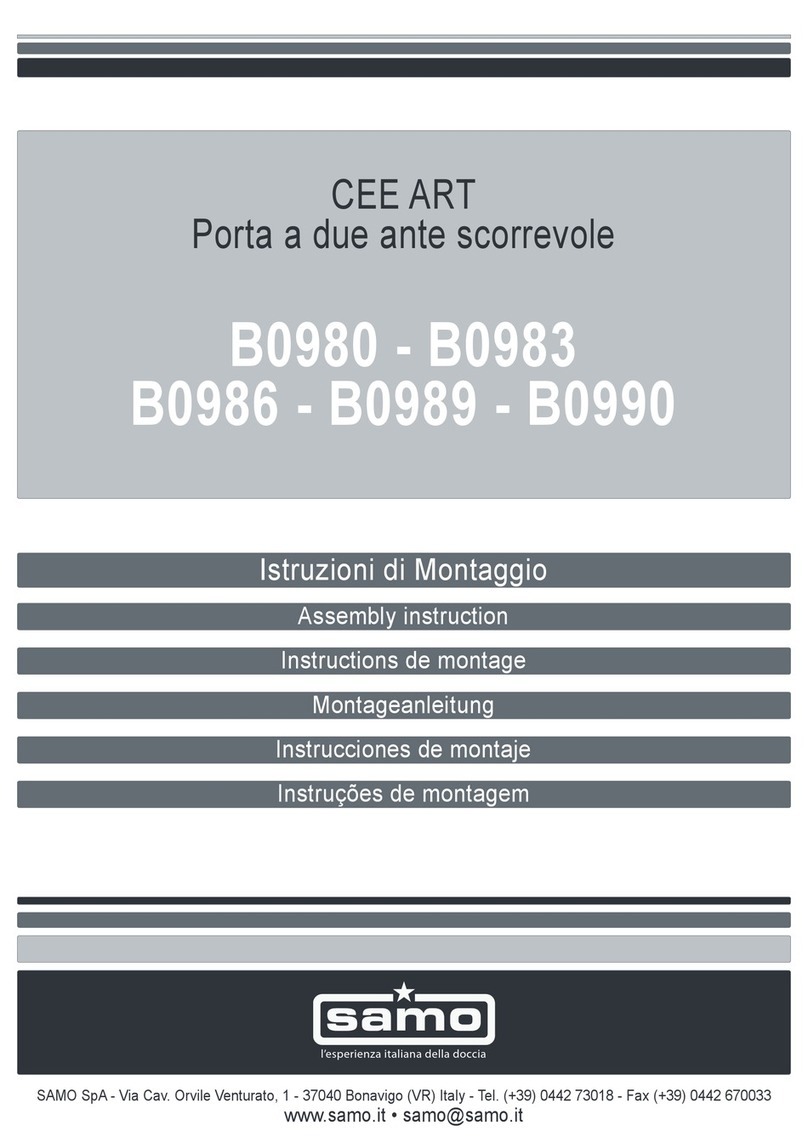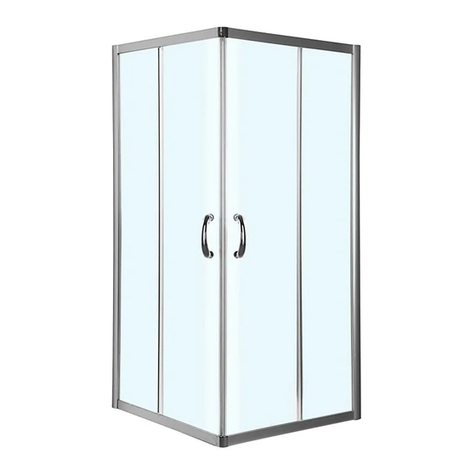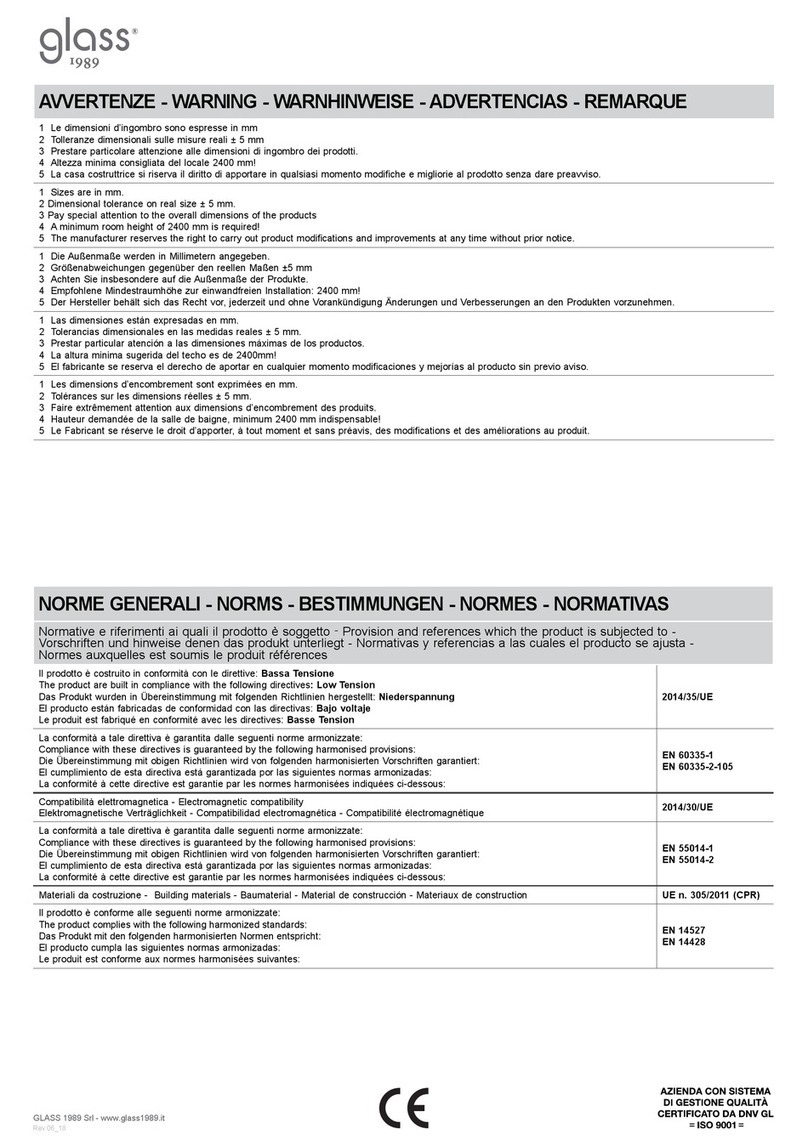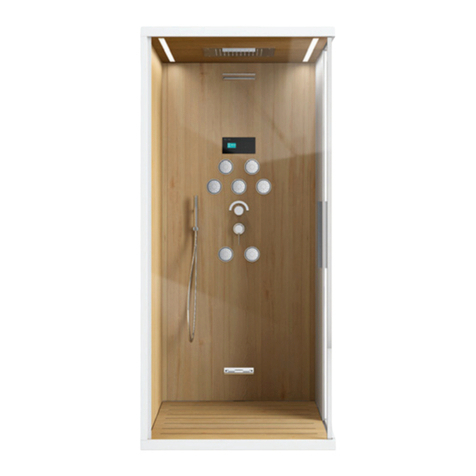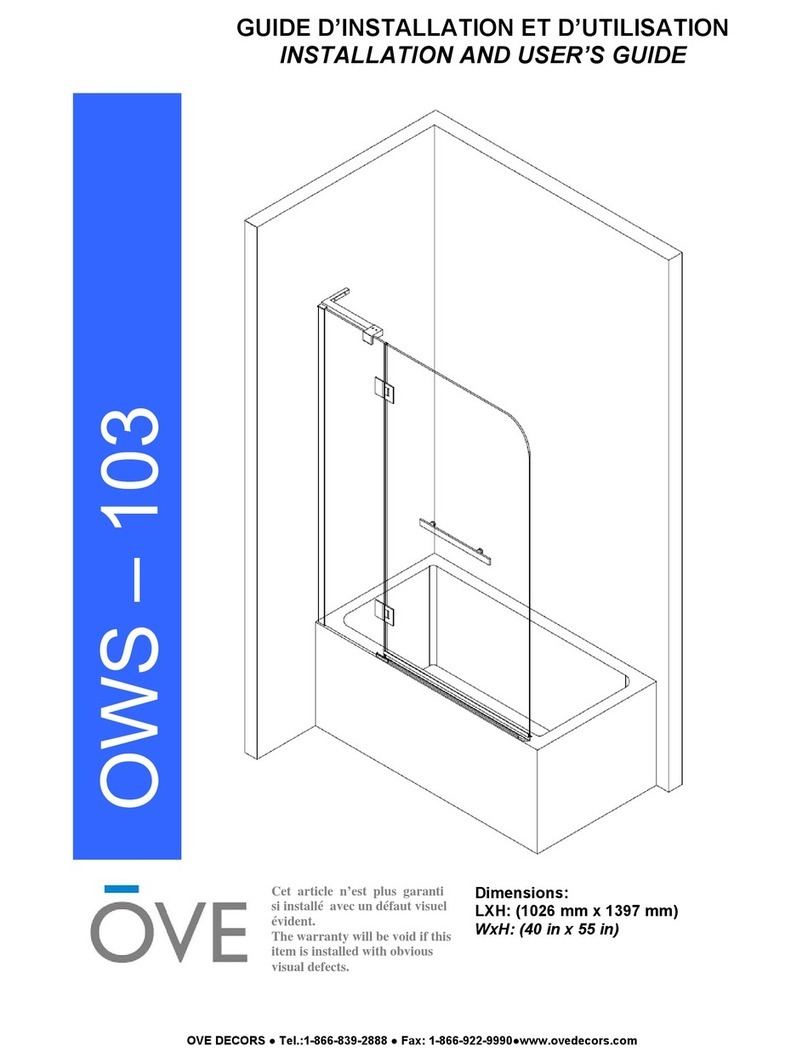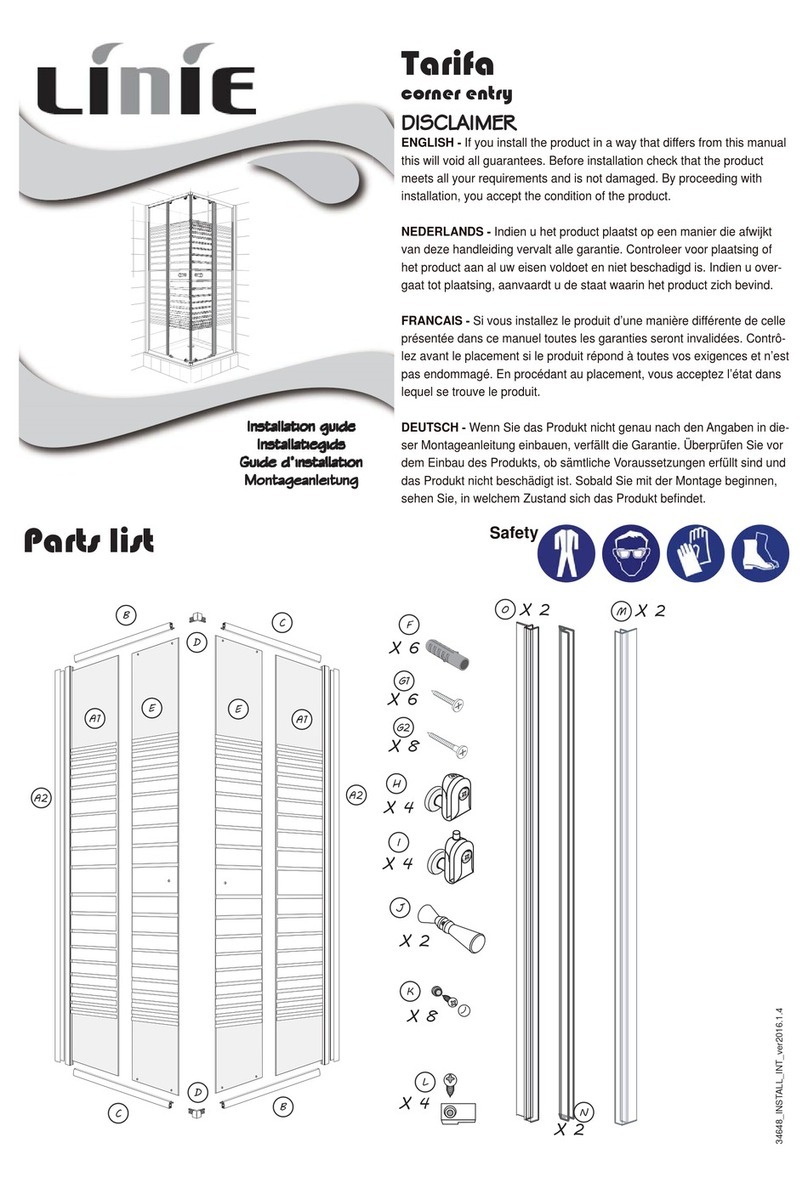
8
Q(10) Assemble the bracket on the frame and, after having
checked the perpendicularity, attach it to the wall.
(detail 1) Given that the perpendicularity of the frame will
be adjusted after assembling the external cornice, we rec-
ommend not fully tightening the screw (V) .
Installing glass panels
Q(11) Place the prole inside the compensator and resting
on the tray; check that the distance with regards the inner tray
rim is equal to the distance between the panel frame prole and
the rim itself.
After having checked the perpendicularity, attach the prole to
the wall.
ATTENTION: when moving glass panels, ONLY use suc-
tion lifters, suited to hold the weight of the glass pan-
els. Also use suitable protective gloves.
Q(12) Insert the glass, as indicated, inside the panel frame;
let it slide across the entire length, to the very edge of the op-
posite prole.
Q(13) Insert the second glass inside the prole, attached to
the tray base and let it slide across the entire length, to the edge,
of the vertical prole.
ATTENTION: check that the glass side displaying the
label faces inwards towards the inside of the shower
enclosure.
Installing the cornice
Q(14) Remove the vertical element which will be positioned
on the wall (drain side) and attach the bracket to the upper part
of this same element (NB: in the instance where you are assem-
bling a cornice to a horizontal surface, the bracket may be attached
at a later stage).
The vertical element does not feature a magnetic prole (M).
Remove the lower element (identiable owing to the two holes
present on the internal part) and thread the short, metal dowel
inside the element itself.
Q(15) Remove the remaining vertical element and the up-
per element. Place silicone, as indicated, on the lower prole and
assemble the elements, checking connections for breakages. At-
tach the elements together.
Q (16) Working from the inside, place a line of silicone on
the lower cornice element; hook up the cornice to the screws
present on the tray.
Q (17) Check the perpendicularity of the panel frame and
permanently x the screws (V).
Insert the cornice to the glass (A) and panel (B), right up to the
edge; attach the cornice bracket to the panel frame bracket.
Installing the roof
Q(18a-18b-18c) Remove the protective lm and attach the
prole to the roof, checking that it is ush. Apply the gasket.
The hole arrangement varies depending on the installation
corner type.
Q(19) Apply lubricant material (e.g. vaseline) to the panel-
frame joints (to facilitate subsequent panel installation).
Then apply the spacers to the glass proles and assemble
the roof, so that it links up with the glass and the panel-frame.
Ensure you hook the roof in the grooves present on the up-
per cornice element.
Hydraulic and electrical connections
Q (20) Draw the panel to the brassware and connect the
brassware to the wall connections.
Also assemble the shower door shutter.
Carry out the following connections:
- with the shower head (A);
- with the waterfall (B);
- with the spray jets (C).
Q (21, part.1) Connect the light cable coming from its re-
spective box to the box present on the roof.
Carry out the following connections:
- with the equipotential terminal board;
- with the emergency alarm circuit (see also the relative chapter);
- with the building's electrical supply system.
Also refer to the wiring diagram.
IMPORTANT: for Countries where 220-240V voltage is
supplied by a two-phase system (L+L), the connection
has to be made on terminals L and N anyway.
We recommend using clamps to gather tubes and cables (
21) and checking that no obstacles which could hinder as-
sembly and attachment of the panel (see 22) are present.
QConnecting the alarm (where necessary)
There are two terminals inside the electric control box (designated
with “ALL”) to which the alarm circuit should be connected; these
terminals are open contacts powered by a relay.
- When the “alarm”key is pressed, a relay inside the electric con-
trol box activates the emergency call device for approximately
15 seconds. The call warning (alarms, buzzers, lamps, etc.) may
be powered to either 220/240 V or low voltage, however with
maximum power absorption equal to 5 A.
- The alarm circuit connection must incorporate a cable with
characteristics not inferior to H 05 VV-F 2x0,75 mm2. This cable
type must be used in order to ensure that the cable clamp at-
tached to the box provides adequate protection as specied by
legislation.
8
